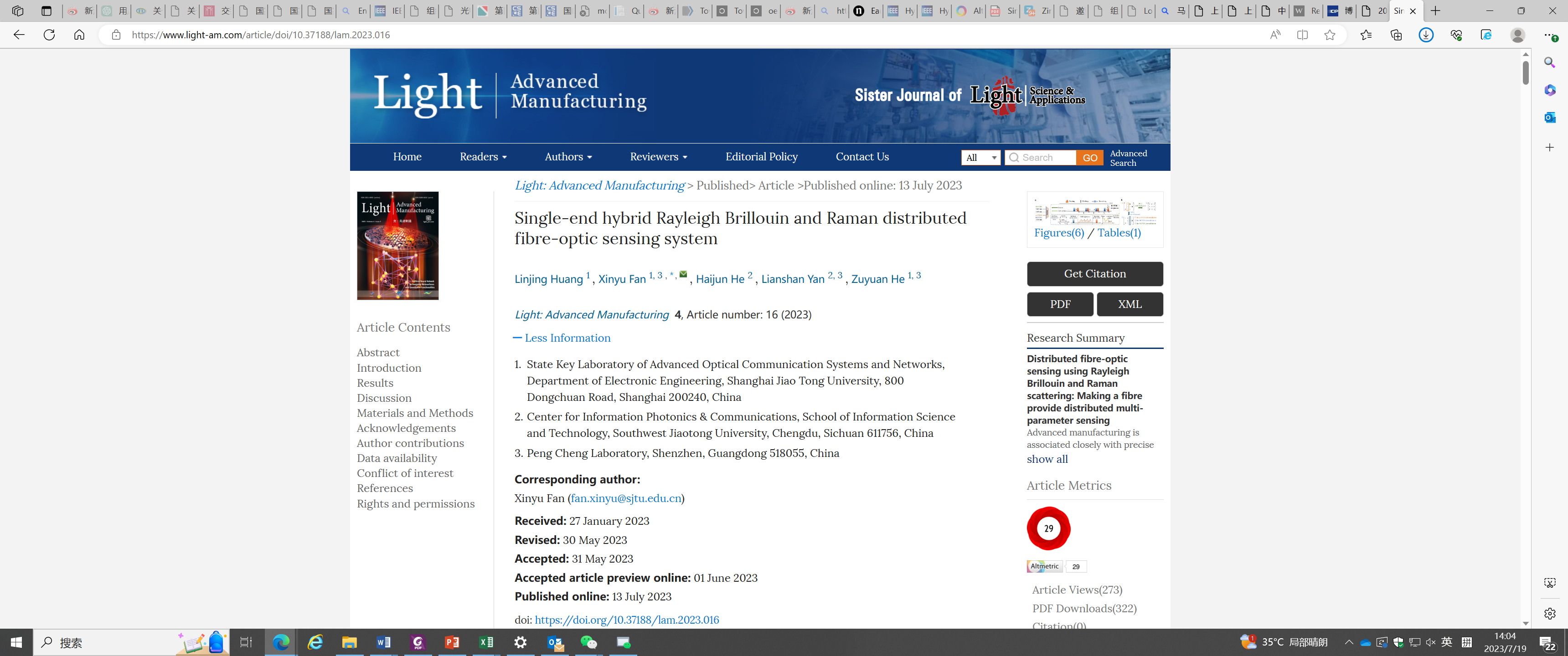- Home
- About Us
- Students
- Academics
-
Faculty
- Electrical Engineering
- Automation
- Computer Science & Engineering
- Electronic Engineering
- Instrument Science and Engineering
- Micro-Nano Electronics
- School of Software
- Academy of Information Technology and Electrical Engineering
- School of Cyber Security
- Electrical and Electronic Experimental Teaching Center
- Center for Advanced Electronic Materials and Devices
- Cooperative Medianet Innovation Center
- Alumni
-
Positions
-
Forum
News
- · Shanghai Jiao Tong University professors Lian Yong and Wang Guoxing's team have made remarkable progress in the field of high-efficiency pulse neural network accelerator chips.
- · AI + Urban Science research by AI Institute was selected as cover story in Nature Computational Science!
- · The first time in Asia! IPADS's Microkernel Operating System Research Wins the Best Paper Award at SOSP 2023
- · Delegation from the Institution of Engineering and Technology Visits the School of Electronic Information and Electrical Engineering for Journal Collaboration
- · Associate professor Liangjun Lu and research fellow Jiangbing Du from Shanghai Jiao Tong University made important advancements on large capacity and low power consumption data transmission
Progresses in hybrid distributed fire-optic sensing systems for multi-parameters achieved by Shanghai Jiao Tong University
Distributed fiber-optic sensing (DFOS) as a precise real-time monitoring technique is in high demand for various industrial applications. Toward this goal, Professors Xinyu Fan and Zuyuan He from the Center for Intelligent Photonics (CIP) at the Department of Electronic Engineering, Shanghai Jiao Tong University, collaborated with Professor Lianshan Yan from Southwest Jiaotong University to propose a hybrid DFOS system with the ability to measure multi-parameters along the sensing fiber simultaneously. It provides a powerful tool for automated control and structural monitoring, which is a major boost to the construction of smart cities.

Background:
The real-time monitoring of facilities, especially large facilities (such as rail transit systems, large bridges, and buildings), can provide information regarding their surrounding environment and allow their health conditions to be assessed, which is essential for establishing the current concept of smart cities based on the Internet of Things. As a precise real-time monitoring technique, distributed fiber-optic sensing (DFOS) systems, which require long-distance simultaneous measurements along a sensing fiber, are in high demand for various industrial applications. However, most DFOS systems can only measure a single kind of parameter, which limits the use in applications. Additionally, a simple combining of different DFOS systems is complex and costly.
Innovative Methods:
In a new paper published in Light: Advanced Manufacturing, Professors Xinyu Fan and Zuyuan He from the Center for Intelligent Photonics (CIP) at the Department of Electronic Engineering, Shanghai Jiao Tong University, in collaboration with Professor Lianshan Yan from Southwest Jiaotong University, proposed a simplified hybrid DFOS system for simultaneously measuring multi-parameters along the sensing fiber. They used a normal single-mode fiber as a sensor to obtain the temperature, strain, and vibration information of the optical fiber with a length of a kilometer. They integrated three different backscattered schemes of single-mode fiber and simplified the hybrid systems. The proposed hybrid system requires only one light source, two receiving ends, and a single access point of the fiber to inject the lightwave, which highly reduces the complexity of application. Therefore, the simplified hybrid system can be used in real-time monitoring of large structures, automated control, and perimeter security. The technique can be a powerful tool to promote the construction of smart cities.

Figure. Working principle of the hybrid DFOS system.
Among different DFOS systems, a technique using Rayleigh backscattering known as phase-sensitive optical time-domain reflectometry (f-OTDR) is used to measure dynamic parameters such as vibration. Brillouin optical time-domain analysis (BOTDA) based on stimulated Brillouin scattering is used to measure temperature and static strains with a high signal-to-noise ratio. Raman scattering can be used in Raman optical time-domain reflectometry (ROTDR) to measure the distributed temperature as it is only temperature sensitive.
The hybrid DFOS system integrates the three different scattering schemes. The Rayleigh scattering is used for vibration sensing and also acts as the probe of the Brillouin scattering process to realize temperature and strain measurement. Raman scattering is used to overcome the temperature-strain cross-sensitivity. Pulse-code modulation is employed to separate Raman scattering of two pulses of similar frequency. In this way, a single-end simplified hybrid DFOS system works successfully for simultaneous multi-parameters measurement.
The hybrid system shows its ability to measure temperature, strain, and vibration along a 9-kilometer long single-mode fiber. The spatial resolution is 10 meters, and the positioning accuracy is less than it.
Paper Information:
Authors: Linjing Huang (Ph.D. student at Shanghai Jiao Tong University), Xinyu Fan (Professor at Shanghai Jiao Tong University), Haijun He (Associate Professor at Southwest Jiaotong University), Lianshan Yan (Professor at Southwest Jiaotong University), Zuyuan He (Professor at Shanghai Jiao Tong University)
Paper Link:
https://www.light-am.com/article/doi/10.37188/lam.2023.016
Journal Information: "Light: Advanced Manufacturing" is the first derivative journal of the leading journal "Light" officially launched in April 2020, positioning itself as a high-level journal in the field of advanced manufacturing.
-
Students
-
Faculty/Staff
-
Alumni
-
Vistors
-
Quick Links
